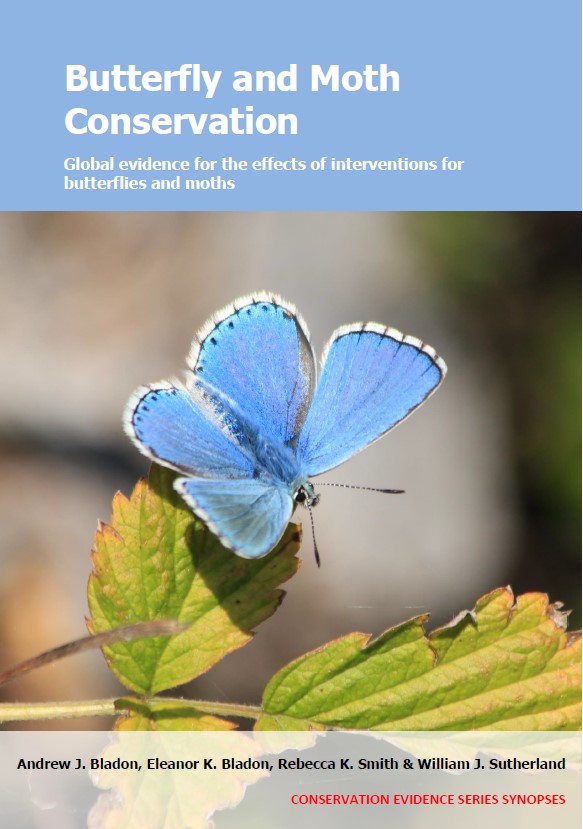Harvest groups of trees or use thinning instead of clearcutting
-
Overall effectiveness category Awaiting assessment
-
Number of studies: 3
View assessment score
Hide assessment score
How is the evidence assessed?
-
Effectiveness
not assessed -
Certainty
not assessed -
Harms
not assessed
Study locations
Supporting evidence from individual studies
A replicated, controlled, before-and-after study in 2007–2009 in three hardwood forests in Indiana, USA (Summerville 2011, same experimental set-up as Summerville 2013) found that timber harvesting method, including group-selection harvesting, did not affect the number of moth species, but all harvested forest stands had fewer moths than unharvested stands. One year after harvesting, there was no significant difference in the number of moth species between stands subjected to group-selection harvesting (40 species), single-tree harvesting (39 species) or shelterwood harvesting and clearcutting (46 species, data not separated), but all harvested stands had fewer species than unharvested stands (56 species). One year before harvesting, all stands had a similar number of moth species (group-selection: 100; single-tree: 85; shelterwood/clearcutting: 96; unharvested: 90 species). In 2008, forest stands (3–5 ha, 150–350 m apart) in three watersheds (500 ha, 10 km apart) were logged. In one watershed, four stands were harvested by group-selection (80% of trees removed) and four stands had random single trees removed. In a second watershed, three stands were shelterwood harvested (15% of trees removed), two stands were clearcut (100% of trees removed), and three stands were unharvested (no trees removed). In the third watershed, all four stands were unharvested. All stands had been clearcut around 60 years earlier. From June–August 2007 and 2009, moths were surveyed every 14 nights (five times/year) from 8pm–7am using a black-light trap placed 2 m above the ground in the centre of each forest stand.
Study and other actions testedA replicated, controlled, before-and-after study in 2007–2011 in two hardwood forests in Indiana, USA (Summerville 2013, same study as Summerville 2011) found that after group-selection harvesting, the number of moth species did not recover faster than after clearcutting, and both were slower to recover than after shelterwood harvesting. Three years after group-selection harvesting, the total number of moth species (52 species/stand) was similar to after clearcutting (48 species/stand), and both were lower than before harvesting (group-selection: 100; clearcutting: 98 species/stand) or after shelterwood harvesting (73 species/stand). After group-selection harvesting, the number of specialist species (8 species/stand) was lower than before harvest (19 species/stand), or after shelterwood harvesting (23 species/stand). However, the number of herbaceous-feeding species was higher after group-selection harvesting (10 species/stand) and clearcutting (16 species/stand) than before harvesting (group-selection: 3; clearcutting: 4 species/stand), but remained similar after shelterwood harvesting (after: 6; before: 4 species/stand). In 2008, forest stands (3–5 ha, 350–750 m apart) in two watersheds (500 ha, 10 km apart) were logged. In one watershed, four stands were harvested by group-selection (80% of trees removed) and four stands were unharvested. In a second watershed, three stands were shelterwood harvested (15% of trees removed), two stands were clearcut (100% of trees removed), and three stands were unharvested. All stands had been clearcut around 60 years earlier. From June–August 2007 and 2009–2011, moths were surveyed every 14 nights (five times/year) from 8pm–7am using a black-light trap placed 2 m above the ground in the centre of each forest stand.
Study and other actions testedA controlled, before-and-after study in 2007–2014 in two hardwood forest blocks in Indiana, USA (Murray et al. 2017) found that thinned areas had more macro-moth species than patch-cut or clearcut areas, and a similar number to unharvested areas. One–six years after management, the species richness of macro-moths in thinned areas (40–68 species/site) was higher than in patch-cut (30–52 species/site) or clearcut (34–54 species/site) areas, and was similar to shelterwood harvested (53–75 species/site) and unharvested areas (56–84 species/site). Before harvesting, all areas had similar species richness (thinned: 84; patch-cut: 99; clearcut: 96; shelterwood: 95; unharvested: 90 species/site). However, after management, the total species richness in the thinned and patch-cut block was 122–162 species, compared to 144–190 species in the shelterwood and clearcut block, whereas before management richness was similar (thinned/patch-cut: 203; shelterwood/clearcut: 198 species; statistical significance not assessed). Two ~100 ha regenerated forest blocks were managed in autumn 2008. In one “uneven-aged” block, two 2.0-ha, two 1.2-ha and four 0.4-ha areas were patch-cut, and the remaining area was thinned by single-tree selection. In one “even-aged” block, two 4.1-ha areas were clearcut, two 4.1-ha areas were shelterwood harvested (midstory and understory cleared), and the remaining area was not harvested. From May–August 2007 and 2009–2014, macro-moths were sampled on five nights/year (once/fortnight) using 12 W black-light traps. Traps were placed in the centre of 16 patches: four patch-cut and four thinned sites within the uneven-age block, and two clearcut, three shelterwood and three unharvested sites within the even-age block. Species represented by fewer than three individuals were excluded.
Study and other actions tested
Where has this evidence come from?
List of journals searched by synopsis
All the journals searched for all synopses
This Action forms part of the Action Synopsis:
Butterfly and Moth Conservation
Butterfly and Moth Conservation - Published 2023
Butterfly and Moth Synopsis





)_2023.JPG)














